Florida has a large population of nocturnal raptors that are vital to the ecosystem. These birds are active during the night, and they have distinct characteristics that set them apart from their daytime counterparts. It is important to understand the sounds, behavior, and conservation efforts of nocturnal bird species in order to protect and preserve them. This guide will help us explore the different nocturnal birds found in Florida. We’ll learn about their habits and how we can contribute towards their conservation.

16 Types Of Night Birds Florida (With Photos and Song ID Info)
Night Birds Florida
What Are Nocturnal Bird Species, And Why Are They Important To Florida?
Nocturnal bird species are those that are active primarily at night. They may engage in behaviors like hunting, foraging, and communication after sunset. These birds are important in Florida because they contribute to the balance of ecosystems, control pests, and participate in the nocturnal web. It is crucial to understand their importance in order to implement conservation measures that will protect their habitats.
What Is Meant By Nocturnal Birds?
Night birds are also known as nocturnal birds. They are distinguished by their activities at night, such as hunting and vocalizations in the darkness. They have eyes that are adapted to night vision and use distinctive sounds and calls for communication in the darkness.
What Role Does Nocturnal Bird Activity Play In Florida Ecosystem?
In Florida, nocturnal birds help control the population of insects that are nocturnal, such as moths and mosquitoes. They are also an important part of the food web since they feed on small animals and other nocturnal creatures. This helps maintain the ecological balance.
What Specific Species Of Nocturnal Birds Are Found In Florida
The Eastern Screech Owl, Barred Owl, and Common Nighthawk are among the many nocturnal birds found in Florida. The nocturnal birds of Florida are diverse because each species has its distinctive characteristics and habits.
What To Watch Out For When Identifying Night Birds In Florida
Understanding the characteristics and patterns of nocturnal Florida birds is essential to identifying them. Their physical characteristics, sounds, and preferred habitats will help you identify them and appreciate their unique traits.
What Are The Distinctive Characteristics Of Florida’s Nocturnal Bird Species?
In Florida, nocturnal birds often have special feather and plumage patterns to help them camouflage themselves during activities at night. They can navigate and hunt with their enhanced hearing and night vision.
What Are The Different Night Birds?
In Florida, a variety of features such as size, flight patterns, and call can help differentiate nocturnal birds. Birdwatchers and bird enthusiasts rely heavily on field guides to identify these distinctive characteristics.
What Are The Best Places To See Night Birds In Florida, And Where Can You Find Them?
In Florida, nocturnal birds are found in diverse ecosystems, including wetlands, forests, and urban areas. Often, they are observed in wooded and water areas where they can locate suitable nesting and prey sites.
Night Birds’ Habits And Behavior In Florida
Understanding the behaviors and habits of Florida’s nocturnal bird species is important for understanding their role in ecosystems and the challenges that they face. This includes urbanization and habitat destruction.
What Is The Typical Behavior Of Nocturnal Bird Species In Florida?
During the breeding season, nocturnal birds in Florida display behaviors like perching on elevated places, hunting for insects and small creatures and vocalizing distinctive sounds and calls.
What Sounds And How Do Night Birds Communicate?
The vocalizations of nocturnal birds include hoots and chirps. They are also used to communicate in their habitats for territorial marking, courtship, and navigation. The sounds of these birds contribute to the rich ambiance at night in Florida’s varied landscapes.
Conservation Challenges And Efforts For Nocturnal Birds In Florida
Conservation of nocturnal birds in Florida is essential for the preservation of the state’s biodiversity and the sustainability of the habitats. These birds are threatened by a number of factors, which require dedicated protection efforts.
What Are The Main Threats To The Nocturnal Bird Populations In Florida?
The primary threats facing the Florida nocturnal birds are habitat loss, pollution, and collisions with structures in the city. Invasive species also pose a threat. These factors are responsible for the decrease of their population and disruption of their ecological role.
What Can Individuals Do To Help Conserve Nocturnal Bird Species In Florida?
Individuals can help conserve nocturnal bird populations in Florida by adopting bird-friendly practices such as reducing light pollution and supporting local conservation efforts. They can also advocate for the preservation of the natural habitats that these birds depend on.
16 Types Of Night Birds In Florida
- Northern Mockingbird
- Yellow Breasted Chat
- Common Nighthawk
- Chuck-will’s-widow
- Eastern Whip Poor Will
- Black-crowned Night-Heron
- Yellow-crowned Night-Heron
- Great Horned Owl
- Barn Owl
- Burrowing Owl
- Short-eared Owl
- Eastern Screech Owl
- Barred Owl
- Great Potoo
- Great Reed Warbler
Mockingbird
Northern Mockingbirds are common backyard birds and residents of Florida all year round. They are known for their melodic whistling songs that can be heard in many parts of the night when there is moonlight. The bird is most active at night. Young males sing the loudest between midnight and 4:00 AM. The enchanting melodies of the Northern Mockingbird can be heard in every neighborhood. They are a familiar, comforting sound for Floridians.
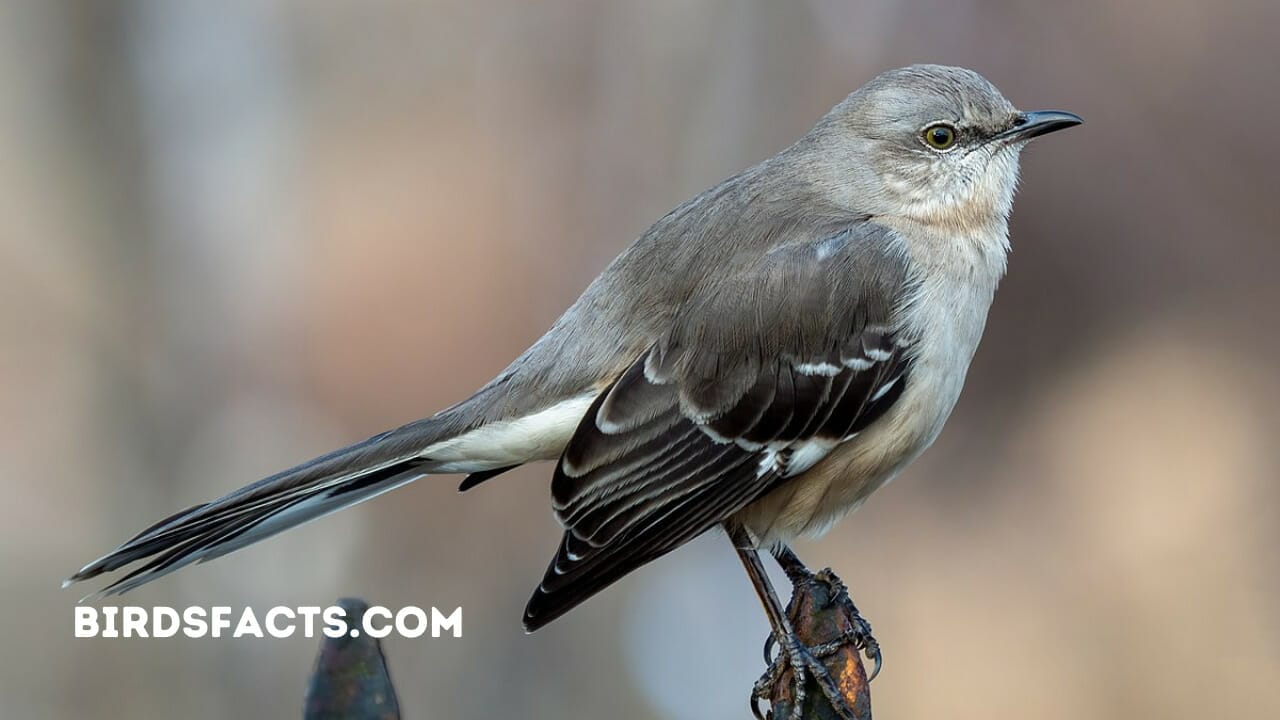
Northern Mockingbirds are versatile singers because they can mimic other bird sounds and even mechanical noises. Their beautiful songs provide a lovely soundtrack to Florida nights and are a testimony to the diversity of wildlife that exists in the state. The Northern Mockingbird, whether perched on a branch or flying from one branch to another, is a delight for birdwatchers and nature lovers alike.
Sound of Northern Mockingbird:
| Scientific Classification | |
|---|---|
| Kingdom | Animalia |
| Phylum | Chordata |
| Class | Aves |
| Order | Passeriformes |
| Family | Mimidae |
| Mockingbird Locations | Central America |
| North America | |
| South America |
Yellow-breasted chat
Yellow-breasted Chats are fascinating birds that are known for their nocturnal calls, which are similar to those of the Northern Mockingbird. They can be found in northern Florida during the summer when they use their unique calls to attract mates. They are small birds, roughly the size of a sparrow or robin. They are easily identifiable in their natural habitat because of their olive-green feathers, yellow breast, gray facial skin, and white eyebrow stripes.
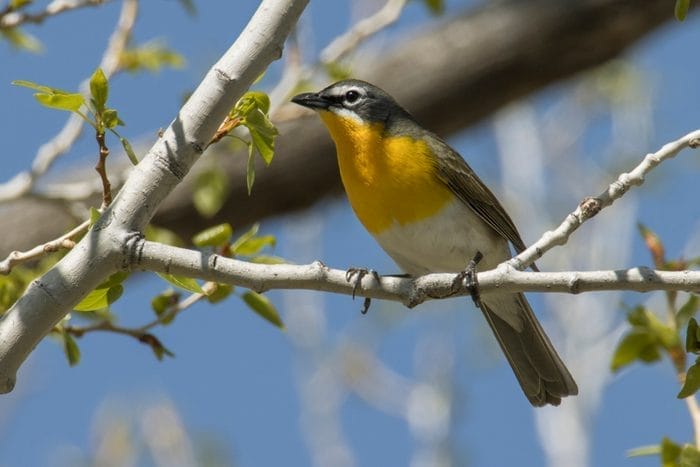
Their loud, varied, and distinctive calls, despite their small size, make them stand out in the Florida night. They create a unique, eerie atmosphere. They are unique in their calls and seasonal visits, making them an important part of Florida wildlife. Birdwatchers and nature lovers alike enjoy watching these birds.
Sound of Yellow-breasted Chat:
| Category | Information |
|---|---|
| Scientific name | Icteria virens |
| Kingdom | Animalia |
| Phylum | Chordata |
| Class | Aves |
| Order | Passeriformes |
| Family | Parulidae |
| Mockingbird Locations | Throughout North America, including the United States, Canada, and parts of Mexico. Prefers thickets, shrubby areas, and forest edges. Found in a variety of habitats such as woodland, marshes, and overgrown fields. |
Common Nighthawk
The Common Nighthawk, a member of the Nightjar family, is dark brown and has white comma markings on its wing. They are most active between dusk and dawn when they use their night vision to hunt insects. Their bright white wings make them easy to identify when they are in flight. The Nighthawk is also well-known for its unique “peent” call during their evening displays.
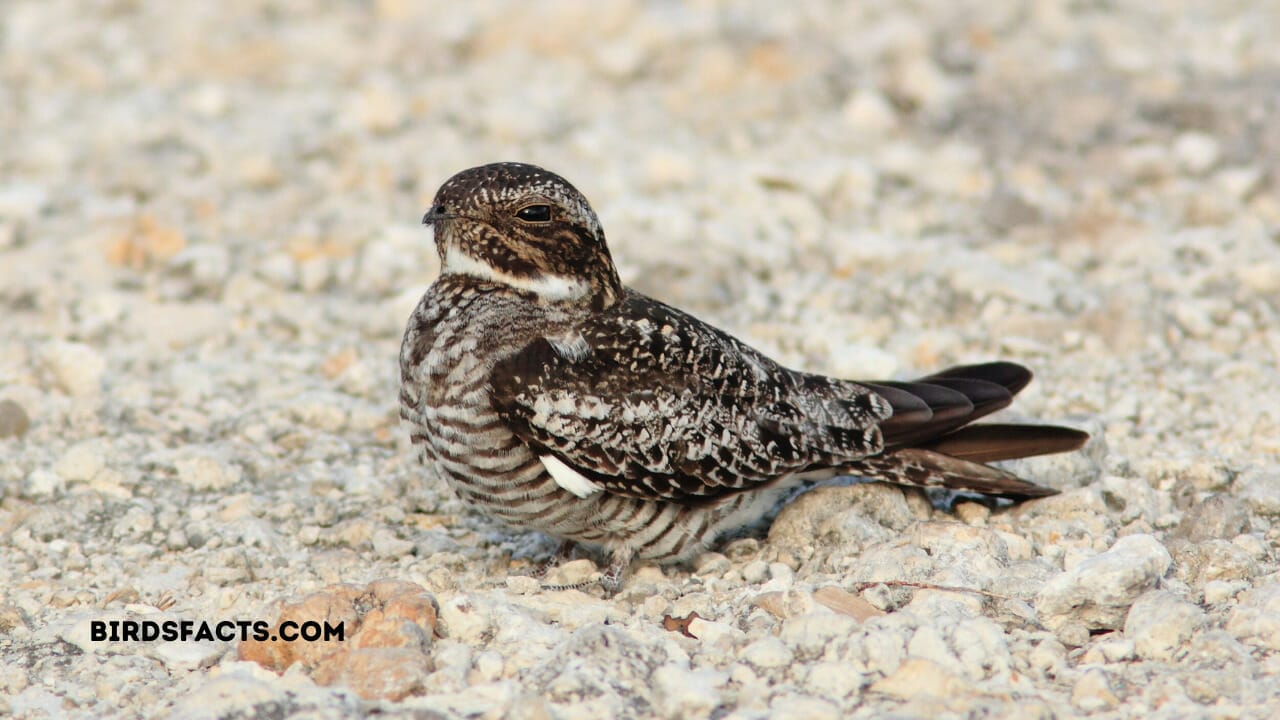
In low-light conditions, you will see a blackbird sporting white stripes. They can be found in fields, deserts, and urban areas. Their camouflage helps them blend into their surroundings. The Common Nighthawk has beautiful, distinctive wing markings.
Sound of Common Nighthawk:
| Attribute | Information |
|---|---|
| Scientific name | Chordeiles minor |
| Kingdom | Animalia |
| Phylum | Chordata |
| Class | Aves |
| Order | Caprimulgiformes |
| Family | Caprimulgidae |
| Mockingbird Locations | Common Nighthawks can be found in various habitats across North and South America, including urban areas, grasslands, deserts, and open woodlands. They are known for their aerial feeding habits and can often be seen at dusk and dawn in cities or near artificial lights where they catch insects on the wing. |
Chuck-will’s-widow
Chuck-will’s-widows are nocturnal birds that are known for their well-camouflaged look and melodious song. The birds’ cryptic feathers make them difficult to see during daylight hours, but their distinct 5-syllable calls can be heard at night. Chuck-will-widows have a keen eye for catching flying insects.
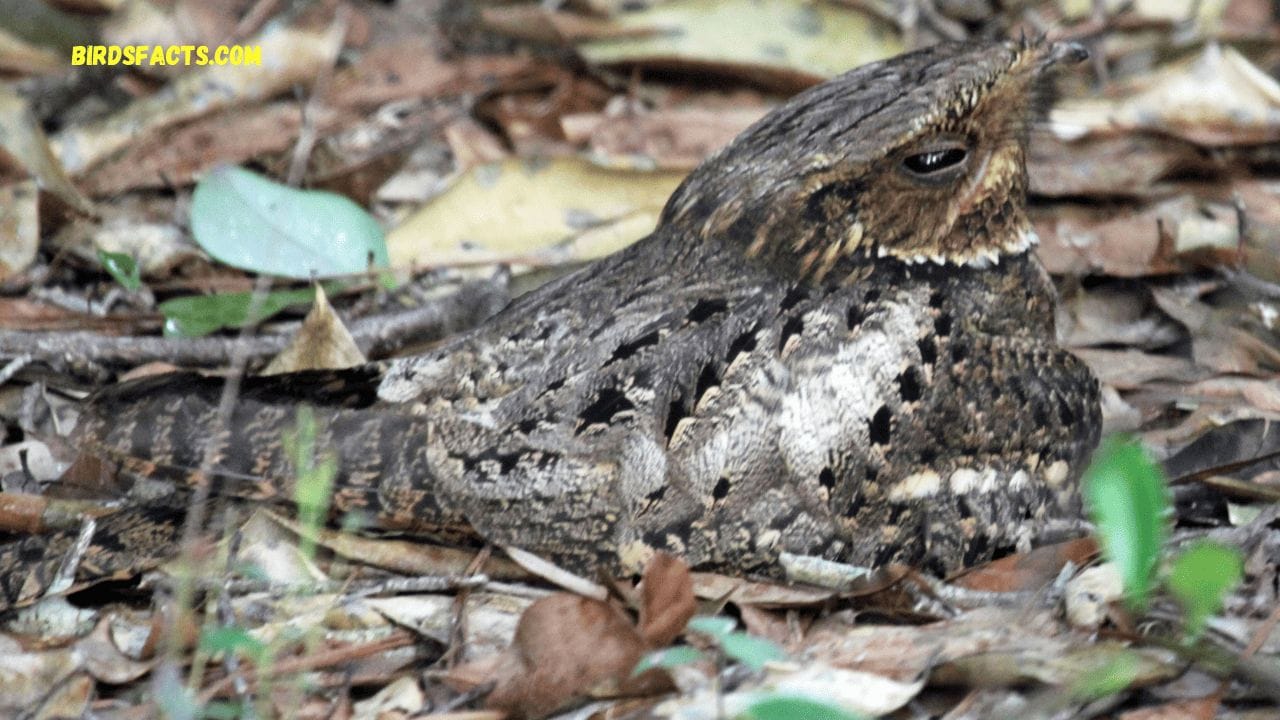
The chuck-will’s-widows are skilled hunters, catching flying insects. Birdwatchers and nature lovers find their elusiveness and hunting techniques fascinating. The Chuck-will-widow’s call is enchanting and mysterious, even though it can be difficult to hear in the wild.
Chuck-will’s-widow call:
| Common Nighthawk | |
|---|---|
| Scientific name | Antrostomus carolinensis |
| Kingdom | Animalia |
| Phylum | Chordata |
| Class | Aves |
| Order | Caprimulgiformes |
| Family | Caprimulgidae |
| Mockingbird Locations | Various regions across North and South America, including urban areas, open woodlands, grasslands, and savannas. |
Eastern Whip Poor Will
In Florida, the Eastern Whippoor-will belongs to the family of nightjars. It doesn’t nest in Florida, but it is a common bird during the winter months from October to April. They are most active in the morning or evening when they fly through the air searching for flying insects.
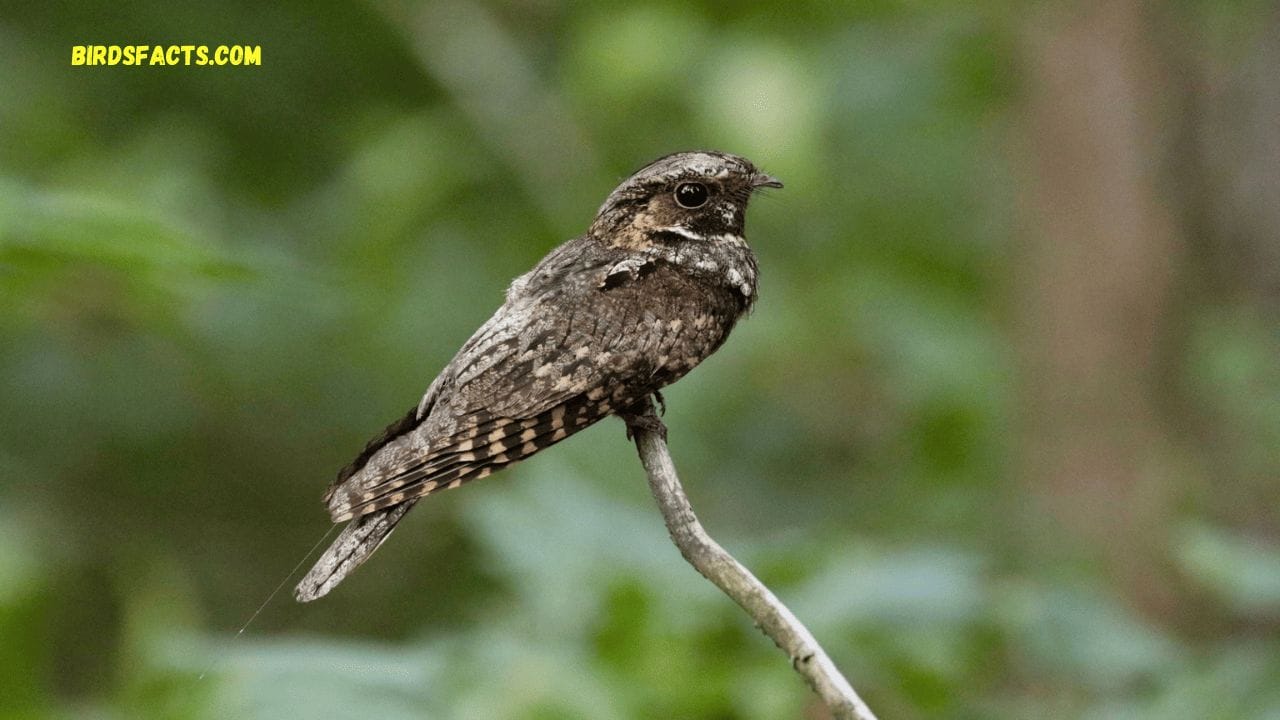
Eastern Whip Poor Will
You can also spot them by listening to the unusual sounds they make. Eastern Whip-poor-wills are also best identified by their famous 3-syllable nocturnal song, which sounds like “whip-poor-will.”Their cryptic plumage and nocturnal habits make them difficult to spot during the day, but their distinctive call can lead birdwatchers to their whereabouts. The fascinating birds of Florida are a part of the diverse avian community and are beautiful to watch in their natural habitats.
Eastern Whip-poor-will sound:
| Category | Information |
|---|---|
| Scientific name | Antrostomus vociferus |
| Kingdom | Animalia |
| Phylum | Chordata |
| Class | Aves |
| Order | Caprimulgiformes |
| Family | Caprimulgidae |
| Mockingbird Locations | Found in Eastern North America, including the United States and Canada. Prefers open woodlands, forest edges, and scrubby areas. It can also inhabit fields and grasslands with scattered trees. |
Black-crowned Night-Heron
This fascinating bird is native to Florida, and its name fits perfectly. The Black-crowned Night-Heron is active during dusk and at night when it forages for frogs or small fishes in wetlands. It is a common Florida resident bird, but it can be hard to see during the day because it hides in quiet places. This heron can be identified by its distinctive and peculiar sounds. These bird sounds have been described as sounding like loud squawking or barking.

Black-crowned Night-Heron
The Black-crowned Night-Heron may be difficult to spot during the day but is an amazing sight at night when it comes out to hunt. The Black-crowned night heron is a fascinating species in Florida’s wetlands because of its nocturnal habits.
Black-crowned Night Heron Sound:
| Attribute | Information |
|---|---|
| Scientific name | Nycticorax nycticorax |
| Kingdom | Animalia |
| Phylum | Chordata |
| Class | Aves (Birds) |
| Order | Pelecaniformes |
| Family | Ardeidae |
| Mockingbird Locations | Various habitats worldwide |
Yellow-crowned Night-Heron
This fascinating bird is often seen foraging both during the daytime and at night. They are often found along the Florida coast, searching for crabs and crayfish. In the north of Florida, they are summer visitors. However, in the south, you can see them all year round.

Yellow-crowned Night-Heron
With its grayish-blue, sleek feathers and yellow-crowned head, the yellow-crowned heron is an impressive sight. The Yellow-crowned night heron, with its striking appearance and adaptable foraging behavior, is a fascinating bird to observe.
Yellow-crowned Night Heron Sound:
| Category | Information |
|---|---|
| Common Name | Yellow-crowned Night-Heron |
| Scientific Name | Nyctanassa violacea |
| Kingdom | Animalia |
| Phylum | Chordata |
| Class | Aves (Birds) |
| Order | Pelecaniformes |
| Family | Ardeidae |
| Mockingbird Locations | Varied habitats including marshes, swamps, and coastal areas. |
Great Horned Owl
This impressive owl has a wingspan of up to four feet and is the largest species of owl breeding in Michigan. This magnificent bird can be recognized by its size, brown plumage (which resembles horns), tufted ears, and yellow eyes. The Great Horned Owl nests in Florida early, starting as early as February or January. The owl uses its keen sense of hearing in order to hunt for prey at night. The Great Horned Owl, despite being nocturnal and mainly hunting at night, is an incredibly skilled hunter. It has been known to capture birds up to the size and weight of ducks and small mammals like rabbits and squirrels.
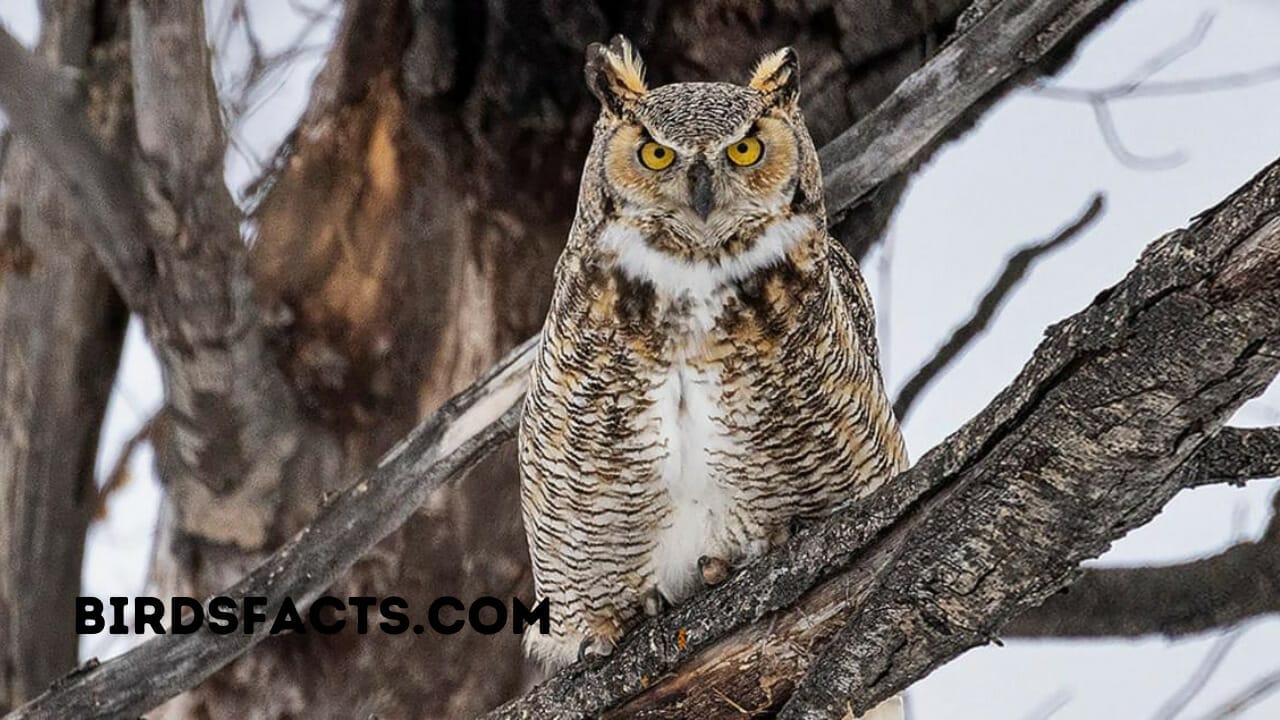
Great Horned Owl
The Great Horned Owl is a formidable predator in the night skies. Its sharp eyesight and powerful talons make it an unstoppable force. The Great Horned Owl, a fearsome and remarkable predator in the world of birds, is truly amazing.
Great Horned Owl Call:
| Attribute | Information |
|---|---|
| Common Name | Great Horned Owl |
| Scientific Name | Bubo virginianus |
| Kingdom | Animalia |
| Phylum | Chordata |
| Class | Aves |
| Order | Strigiformes |
| Family | Strigidae |
| Mockingbird Locations | Various habitats throughout North and South America. These owls have a widespread distribution, from forests to urban areas. They can also be found in parks, deserts, and other diverse landscapes. |
Barn Owl
Barn Owls are nocturnal, fascinating raptors that look softer than Great Horned Owls. These owls have exceptional night vision and are only nocturnal. They are difficult to spot because of their nocturnal lifestyle. They can be identified by the characteristic screeching sound that sounds like someone being strangled. You may see their underside glow if you spot them flying by the light from the moon. They are excellent hunters for small mammals such as mice and voles, thanks to their heart-shaped faces and keen hearing.
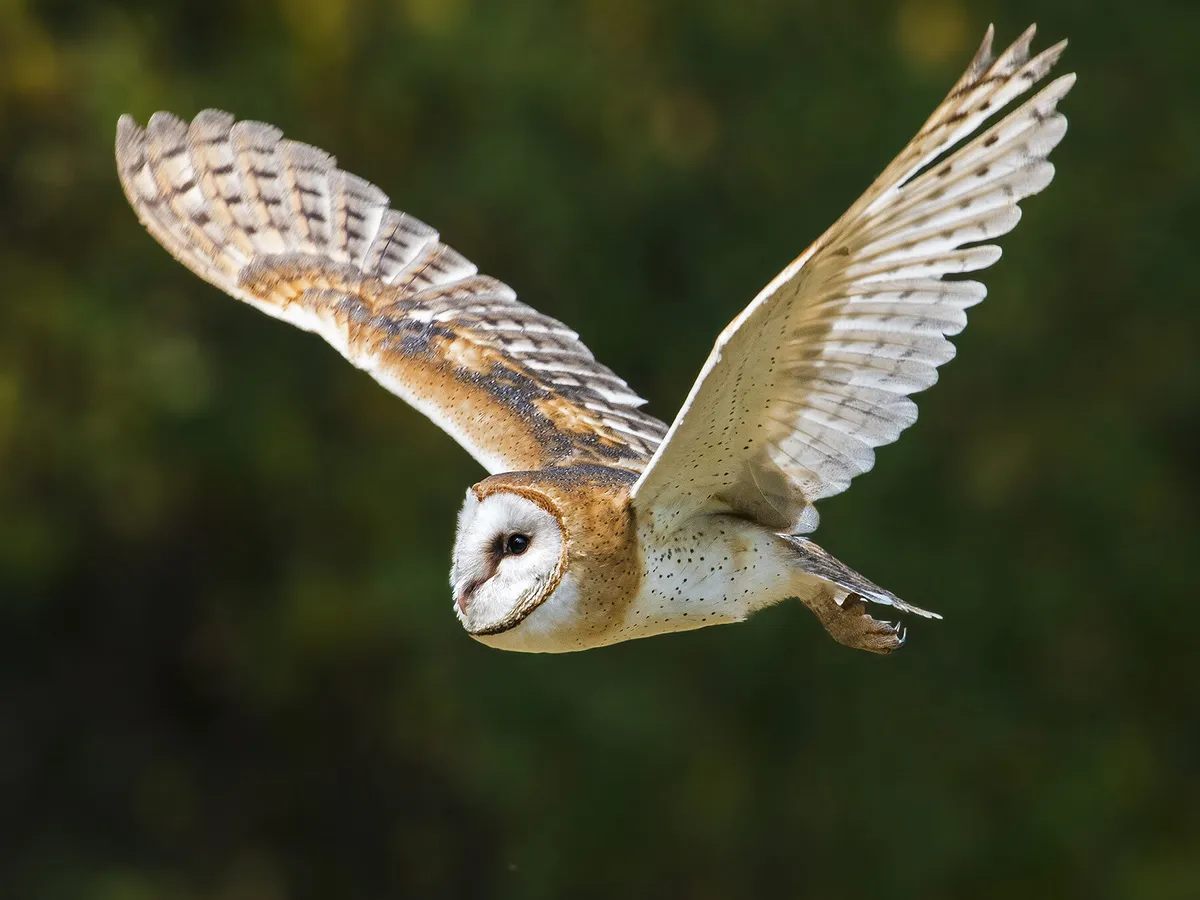
Barn Owl
They can easily capture their prey due to their silent flight and sharp claws. Barn Owls are a vital part of the ecosystem and play a crucial role in controlling rodent population. The Barn Owl is present all year in Florida and prefers open areas, farmland, and other agricultural land as hunting grounds.
Barn Owl Sound:
| Aspect | Information |
|---|---|
| Species | Barn Owl |
| Scientific name | Tyto alba |
| Kingdom | Animalia |
| Phylum | Chordata |
| Class | Aves |
| Order | Strigiformes |
| Family | Tytonidae |
| Mockingbird Locations | Varies widely, predominantly found in North and South America, including parts of Europe, Africa, and Asia. |
Burrowing Owl
Burrowing Owls are a rare sight on the Florida open plains, where they nest and live. This owl, which is known for digging its burrows and taking over those left by ground squirrels or prairie dogs, is a resourceful and dynamic species. The owl is active day and night and uses its keen hearing and sight to hunt for small rodents and insects.

Burrowing Owl
It can be difficult to spot a Burrowing owl in the vast prairies due to its small size. These birds are usually seen perched on small mounds where they can observe their surroundings and search for food. These birds are unique and fascinating despite their rarity. They play an important role in Florida’s ecosystem.
Burrowing Owl Sound:
| Information | Details |
|---|---|
| Scientific name | Athene cunicularia |
| Kingdom | Animalia |
| Phylum | Chordata |
| Class | Aves (Birds) |
| Order | Strigiformes |
| Family | Strigidae |
| Mockingbird Locations | Various regions worldwide where they inhabit |
Short-eared Owl
Short-eared Owls are a highly migratory and fascinating species. They can be seen in Florida even outside the breeding season. These owls, unlike other owls, are more active in daylight, which makes them easier to spot when hunting. The owls’ distinctive hunting technique of flying low above open areas increases their visibility. These owls are found in Florida on a wide range of landscapes, including farmland and airports.
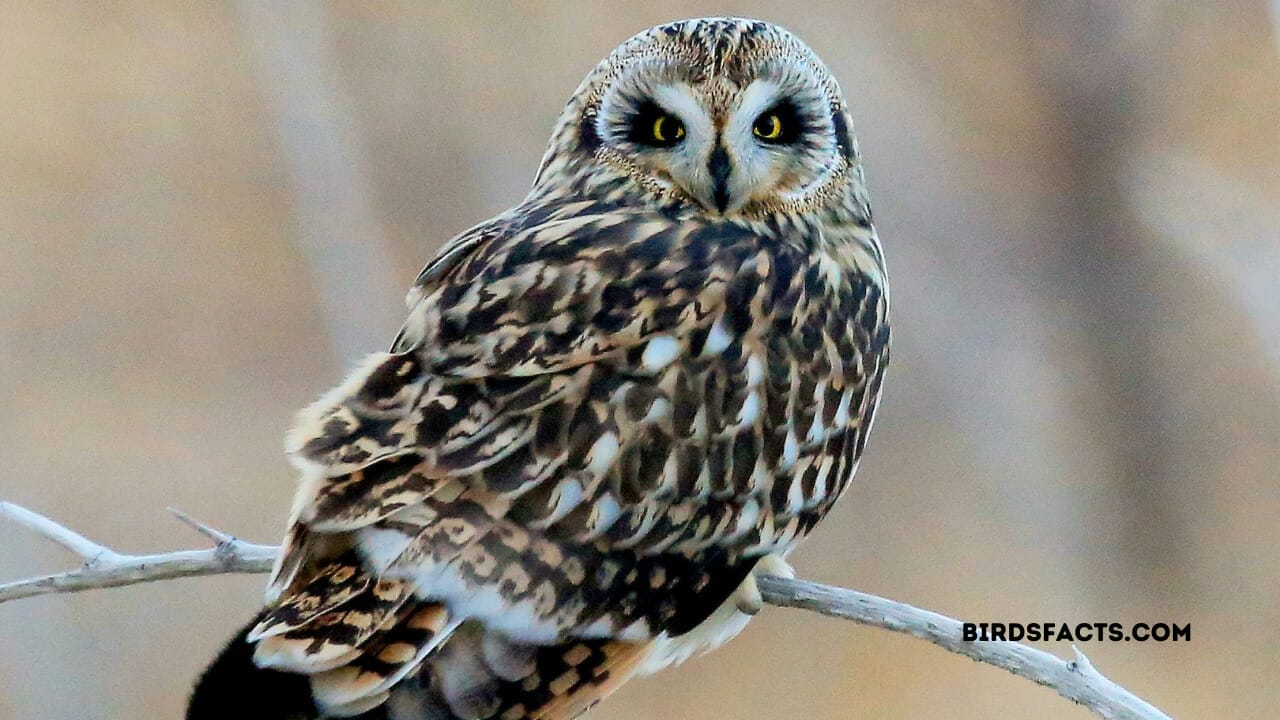
Short-eared Owl
They do not breed here, but their presence and behavior make them an interesting bird to see in the wild. The Short-eared Owl’s striking appearance and unusual hunting habits make it a fascinating addition to Florida’s diverse bird populations.
Short-eared Owl Call:
| Attribute | Information |
|---|---|
| Species Name | Short-eared Owl |
| Scientific Name | Asio flammeus |
| Kingdom | Animalia |
| Phylum | Chordata |
| Class | Aves |
| Order | Strigiformes |
| Family | Strigidae |
| Mockingbird Locations | Short-eared Owls can be found in various habitats across North America, Europe, Asia, South America, and parts of Africa. They are known for their wide distribution but tend to prefer open landscapes such as grasslands, marshes, and tundra. |
Eastern Screech Owl
The Eastern Screech-Owl has adapted to urban life and is an adaptable, fascinating bird. They were originally found in woodlands but are now regularly seen in parks, gardens, and golf courses. Birdwatchers love their distinctive series of accelerating hoots. They breed in tree holes, so urban areas with matured trees are ideal for them. Eastern Screech Owls are small, but they have a diverse and robust diet.
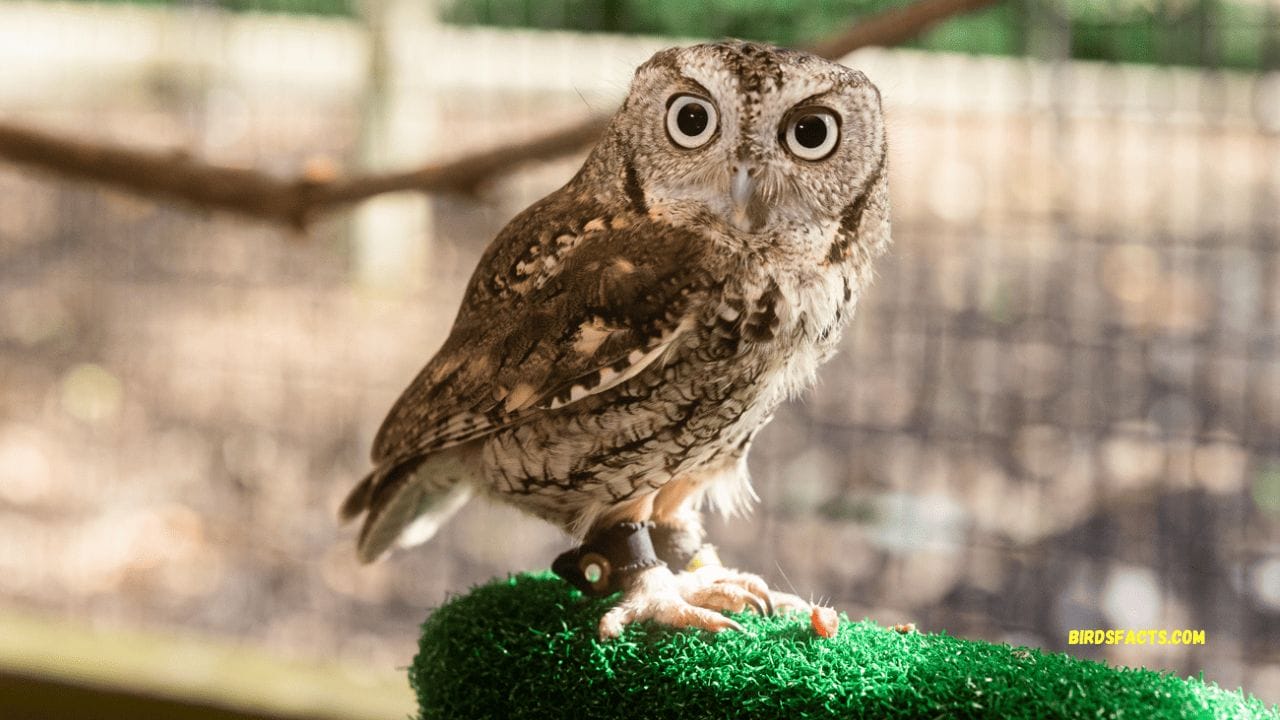
Eastern Screech Owl
They eat small animals like worms and insects, as well as rodents. They are common all year in Florida and add to the rich wildlife of that state. These adaptable birds can thrive in man-made habitats despite their preference for wooded environments.
Eastern Screech Owl Sound:
| Attribute | Information |
|---|---|
| Common Name | Eastern Screech Owl |
| Scientific Name | Megascops asio |
| Kingdom | Animalia |
| Phylum | Chordata |
| Class | Aves |
| Order | Strigiformes |
| Family | Strigidae |
| Mockingbird Locations | Various locations across North and Central America |
Barred Owl
Over the last century, the Barred Owl has expanded its range steadily westward. The Florida bird of prey is now found throughout the entire state, especially in mature forests that border swamps. The Barred Owl can be easily located by listening to its characteristic hooting at night. Nest boxes can be placed in old trees to make nesting easier. The Barred Owl, with its distinctive barred feathers and large, deep-set eyes, is an easily recognized species among birders.

Barred Owl
The Barred Owl is still threatened by habitat loss and vehicle collisions despite its wide distribution and ability to adapt to various habitats. Conservation of these magnificent birds depends on efforts to protect their habitats and increase awareness.
Barred Owl Sound:
| Category | Information |
|---|---|
| Scientific name | Strix varia |
| Kingdom | Animalia |
| Phylum | Chordata |
| Class | Aves |
| Order | Strigiformes |
| Family | Strigidae |
| Mockingbird Locations | Various regions in North America, including forests, woodlands, and urban areas. Barred owls are also found in some parts of the Pacific Northwest. |
Great Potoo
Great Potoos are nocturnal, insect-eating birds that can be found from Southeastern Mexico up to Bolivia. The eerie guttural sounds of these birds can be heard through the darkness of the night. They sound like an angry cat. They can blend in with the trees they live in during the day thanks to their camouflage. The Great Potoo, one of seven species of potoos, is known for its nocturnal habits and eating of insects.

Great Potoo
They play an important role in the maintenance of ecosystems within their habitat as they control insect populations. The Great Potoo and its relatives are not as well known as other species of birds. However, they are still important members of neotropical forests.
| Category | Information |
|---|---|
| Common Name | Great Potoo |
| Scientific Name | Nyctibius grandis |
| Kingdom | Animalia |
| Phylum | Chordata |
| Class | Aves |
| Order | Caprimulgiformes |
| Family | Nyctibiidae |
| Mockingbird Locations | Tropical forests of Central and South America |








